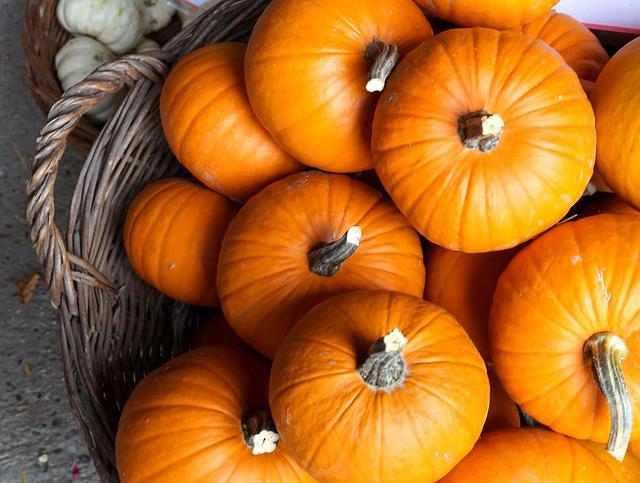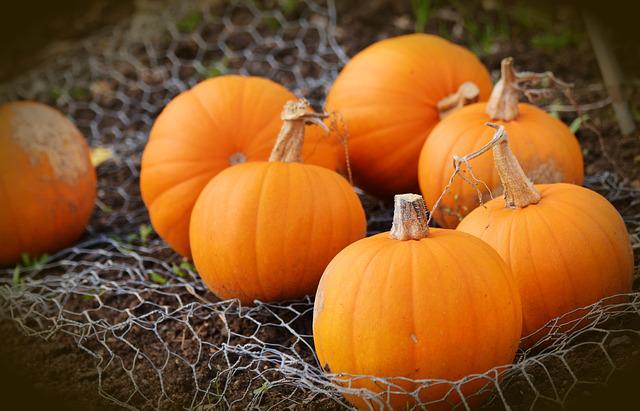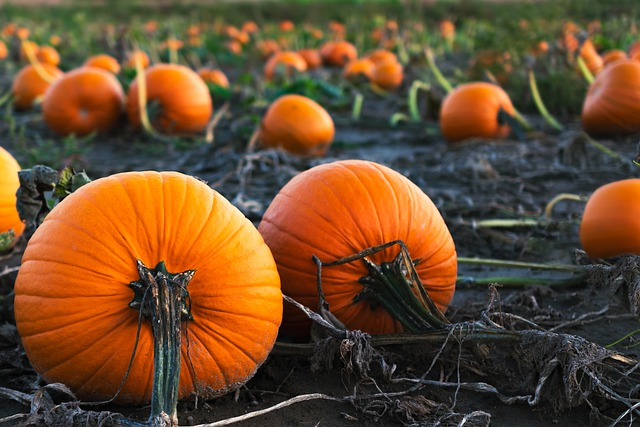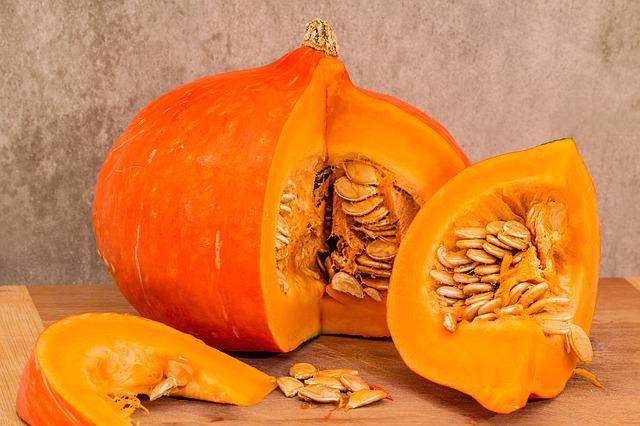Can Pumpkins Be Grown in Pots? Ways to Grow Pumpkins in a Container

There is a lot of debate around growing pumpkins in containers, but the good news is that it does work for mini-pumpkins. While there are some limitations to consider, such as lack of space or nutrients, pumpkin growing in containers can be a fun and rewarding experience.
Table of Contents
Top Pumpkin Varieties for Containers
When growing pumpkins in containers, it is best to choose smaller varieties that produce fruits weighing 2 to 5 pounds and measuring 6 to 10 inches across. These pumpkins, along with miniature pumpkins, thrive in containers.
Here are several options to consider.
Baby Bear
This type of pumpkin takes about 105 days to grow to half the size of a regular pumpkin. You can make great pies with baby bear pumpkins. They are 5 to 6 inches wide and can weigh up to 2 pounds most of the time.
Baby Boo
It’s a small, creamy white pumpkin of 2 to 3 inches. When fully ripe, the flesh turns a pale yellow color. As a result, this variety is recommended to be harvested before it reaches full maturity.
Bushkin
This compact, bush-type pumpkin is ideal for containers or small gardens, as its vines only reach 5 to 6 feet in length. Up to 10 pounds in weight, these pumpkins are ideal for pies and carving.
Jack Be Little
They were first introduced in 1989 as the “Cucurbita Pepo” pumpkins. Hybrids like Baby Boo, Munchkin, or Sweetie Pie pair well to create the ideal harvest blend table setting and compact space décor, such as entry tables.
Planting pumpkins dates back thousands of years in Mexico and the United States, where natives taught early settlers how to do so. Today, there is a wide range of pumpkins available, from tiny varieties like Jack Be Little to giants like Atlantic Dills. As for Jack Be Little, there is speculation that this adorable crop may have its roots in the Orient, where pumpkins were given to the spirits by the people.
Small Sugar
This type of tomato often called “New England Pie” can be ready in 105 days. It’s a pie pumpkin that gets between 5 and 8 pounds and has a great flavor. Most small sugar pumpkins are grown for use in the kitchen, like baking and putting up food. It is an old pumpkin from before the Civil War.

How to Cultivate Pumpkins in Pots
We will show you how to cultivate pumpkins in pots, specifically growing in small spaces. By following these simple steps, you’ll be able to grow your pumpkins without any fuss or trouble.
1. When Should Pumpkins Be Planted?
Pumpkins are frost-sensitive, so they must be planted in containers once the temperature reaches 65°F. In most USDA zones, they can be planted between April and late May, depending on where you live.
If you live in a warm, frost-free climate, you can start planting in July for a harvest in October or November.
Pumpkins can be grown year-round in subtropical or tropical climates.
2. Select the Correct Container Size for Your Pumpkin Plants
The most crucial aspect of growing pumpkins in containers is choosing the appropriate pot size. Your plant will die if you don’t get the right size; it needs plenty of room for the roots to spread out and grow.
For smaller pumpkin varieties, a pot of 10 gallons is ideal. If you like to grow larger cultivars, such as the pumpkins used to make jack-o-lanterns, you’ll need a larger pot, usually 15-25 gallons.
The pots should be 20-24 inches deep and the same width to accommodate growing pumpkins. Some gardeners have had success growing pumpkins in 6-foot-wide plastic children’s swimming pools. That’s both unique and affordable!
Make sure the containers have enough drainage as well. Because pumpkins dislike standing water, make sure the bottom of the pot you choose has plenty of drainage holes. If the containers don’t already have holes, you can usually drill them in with a drill.
3. Place the Pot in Direct Sunlight for 4–6 Hours Each Day
You don’t want to try to move these containers once they’ve been filled with soil and a big plant.
Before you start growing pumpkins, you must first determine the best location.
Even if you’re growing a small pumpkin cultivar, pumpkins require the brightest spot on your patio that you can find.
Each day, these plants require at least six hours of direct sunlight. If you try to grow your plants in too much shade, they will grow slowly and retain too much moisture, which will lead to mildew.
- Prepare the Soil For Planting Pumpkin Pots
Begin with a bagged soilless mix designed for container growing. These mixtures are designed to help plants retain moisture and nutrients.
Pumpkins can grow quite large, so you can expect them to be heavy feeders. Because these plants require a lot of nutrients, humus-rich soil is essential. That is why you must use potting soil that has been enriched with compost. The compost also retains water.
Don’t worry about using too much compost or manure; pumpkins will require plenty. Before planting, mix it into the soil, and then plant to add more compost to the top of the soil afterward.
Check the soil pH range of the soil in your container. Pumpkins prefer a temperature range of 6 to 7.2°F.
5. Sow the Pumpkin Seeds or Seedlings in Pots
Because pumpkins become root-bound rapidly, it is best to plant the seeds directly in the pots rather than transplanting seedlings started indoors. If you purchase seedlings from a nursery, you must transfer them immediately to prevent transplant shock.
If you sow seeds indoors, consider using biodegradable containers. This makes transplanting seedlings simpler because the roots are not disturbed.
When the second set of true leaves develops, sow three or four seeds per pot and then thin to one or two, depending on size, when the seedlings reach their full size.
The number of seedlings you retain depends on the size of the container you choose.
Plant each seed in the soil 1 to 2 inches deep. If you plant them deeper, it will be more difficult for them to emerge from the soil. Typically, it takes between 5 and 10 days for seeds to germinate.

6. Establish A Support System
Consider the size of these plants; you must install a sturdy and large trellis capable of supporting the pumpkin vines. Typically, you should not allow vines to grow along the ground or patio, as this can introduce bacteria to your plant.
Most gardeners have success supporting pumpkin vines with an A-shaped trellis. The trellis must be kept away from walls to prevent the plant from contracting diseases.
You will need to train the vines to grow the support system as your plant grows. This is much simpler than it may sound.
As the tendrils grow, you only need to move them around the trellis with care. The tendrils naturally attach to nearby objects to promote growth.
As the fruits mature, you will need to create slings to transport them. If not, they will hang down and possibly break the vines. Many gardeners use pantyhose attached to the trellis as a sling under the fruit.
How to Take Care of Pumpkins in Containers
Your pumpkin plants are growing well in their pots, but now you have to make sure they stay happy. Here’s how to care for pumpkin plants that are growing in pots.
Water Often
One important thing to do is to water your plants often. Like melons and gourds, pumpkins need to be watered often. Pumpkins like moist soil, so water them often and deeply. Every week, each plant needs an inch of water.
At the same time, you need to make sure you’re only watering the plant’s roots and not getting water on its leaves.
Cover Your Plants With Mulch
It’s a great idea to mulch around your pumpkin plants. To avoid accidentally covering the pumpkin plant, do so when the plants are only a few inches tall.
As water evaporation from the soil is reduced, mulching aids the growth of pumpkin plants. It can also cool the soil temperature in the summer by providing water to the soil in the late spring.
Maintaining a Fertilized Environment Is Essential
You’ll need a lot of fertilizer if you’re hoping for a good harvest with pumpkins, as they’re heavy feeders.
The first step is to make sure the soil is rich and fertile so that you can grow larger pumpkins. To ensure that this step was covered during planting, follow the instructions to use a lot of compost.
Using a balanced fertilizer at the beginning of your plant’s growth will help it thrive as it grows.
A 5-15-15 fertilizer high in potassium and phosphorus and low in nitrogen should be used as your plant grows.
Every other week, apply 5-15-15 fertilizer. This fertilizer should be applied when the plant has grown to a size that allows it to produce flowers.
You Might Need To Pollinate Flowers By Hand
Pollination is important if you want your plants to bear fruit. Bees and other pollinators are important, but you may need to do it yourself if you see that the flowers are not being pollinated.
The female flowers come out a few days after the male flowers. They have an ovary, which is the beginning of a pumpkin, at the base of the flower. The pollen that goes into the female flowers comes from the male flowers.
If you need to pollinate the flowers by hand, take a cotton swab and gently move it around inside the male flower to collect pollen. Then, move the pollen to the swab and rub it inside the female flower.
Yes, you just acted like the birds and the bees in a garden!
Indoor Pumpkin Planting in Small Containers
For those who don’t have enough room in their garden, pumpkins can be grown inside a container, provided they get enough light and the vines are kept under control. Keep the soil moist and well-fertilized with regular watering and fertilization.
Plant your seeds in a container big enough to accommodate a trellis. Train the vine to grow around the trellis as it grows. Otherwise, it will sprawl across your floor.
Hand pollination is a more significant challenge when growing indoors instead of outdoors. You’ll need to hand pollinate them to get pumpkins from indoor plants, as explained in the previous section. It is necessary to know the difference between male and female flowers before you can do this.
Is There a Right Time to Pick My Pumpkins?
Harvesting your pumpkins in time for the holidays is easy if you have good soil, plenty of sun exposure, and plenty of water. Fruits mature in 90-120 days after planting, depending on the variety (or from transplanting).
However, given the many variables at play, this estimate is subject to change. The date isn’t always accurate. Instead, keep an eye out for a few signs that the fruits are ready to be harvested:
The fruit’s final shade of ripeness has been achieved. To be sure, quickly compare your pumpkins to the picture on your seed packet. The rind of the fruit is now hard and resistant to nicks and gouges. Ideally, the stem above the fruit will be tough and woody.

